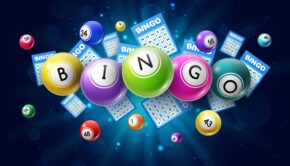What Is Concept Art for Video Games?
Have you ever wondered how such amazing landscapes, realistic characters and convincing settings appear in computer games? A huge number of people are working on creating the masterpieces that we play today. One of the most important professions in their development is a concept art artist or just a concept artist. It is they who pave the way for the games that we see today.
Video game concept artists add characters, visual effects, and 3D assets to the game to make it more attractive. At the earliest stage, game developers are faced with the need to create in the shortest possible time drafts and layouts of scenes or game characters in a certain style, which will then be put into production. Models, textures, mechanics, effects and other game entities are created based on concepts.
Concept art saves time. It is also a powerful tool for creating the world. Without it, developers will not get a holistic view of the game world: the concept in the head and the concept on paper are completely different things.
So, let’s talk in more detail about the role of concept art in the gaming industry and the functionality of video game artists who deal with it.

Main Definition and Goals
As we have already said, concept art for a video game lays the foundation for its artistic style. It is an important, albeit often underestimated, aspect of the gaming industry. Today’s video game concept art of landscapes and characters will become game content tomorrow. The most atmospheric games come out of the best game concept art. It brings the presented styles of play, mechanics and general thoughts about the genre into a more formalized product.
Concept Art Directions
There are several main areas:
- Character concept. Artists working in this direction search for a visual image of the hero. They need to reflect the character and emotions of the character, think through his or her costume and characteristic poses. This is true both for children’s cartoons and for Hollywood blockbusters and AAA games.
- Environment concept. Here, the artist is faced with tasks both in creating separate interiors or buildings and in thinking through entire locations (city blocks, islands, dungeons, castles, etc.). In addition, the most important part of developing an environment is working with lighting and color. With the help of them, the atmosphere and mood of the picture are created.
- Props concept. Often, this work is entrusted to less experienced concept artists on large projects. It is simpler since its essence lies in the creation of certain assets, often small and not requiring special efforts, which will subsequently be located in different game locations.
- Technique concept. This direction is characteristic, first of all, for sci-fi settings. It is issued separately since it does not fall under either the props or the environment category. An artist needs a very good understanding of transport and weapons, knowledge of perspective and 3D.
Typically, a company has a separate unit of experts who deal specifically with concepts. It is not so difficult to find such an expert: many recruiting and outsourcing agencies offer concept artists for hire. Another thing is to convey your idea to the specialist and get the desired result.
How is Game Concept Art Created?
Often, it all starts with a study of references. The base of visual options is the key to creating the future style of the game. The more such material, the easier it is for an artist to understand the direction and correctly display it. First, the concept expert should depict the object in front, then from other angles: back, side and top. Working with symmetrical objects is easier. In addition, there is the option of scanning or photographing objects in order to more easily convert them to digital format.
More detailed environments, characters, and assets are created based on initial sketches. Game level concept art requires the careful drawing of all the smallest elements that may be encountered along the way. After that, 3D modeling comes into play. It is important to note that it is the concept artist who must provide the 3D modeler with enough visual information so that the latter does not have any questions about how the equipment is mounted, whether the proportions of the object are balanced correctly and whether the vehicles of such a design can actually move.
Concept Art Game Design vs Illustrations
Despite the frequent confusion in the definitions of these two concepts, they are not the same. The essence of the difference is that the concept artist collects ideas and represents them for further work on the game. An illustrator simply works on specific projects, which in themselves are finished works and are not intended for further use as a base material.
Conclusion
So, what do we have as a result: concept creation is a fundamental stage of work on entertainment projects. Without this stage, it is impossible to move on, since the gaps in the visual representation will certainly end up in trouble with further work. Therefore, you need to approach this with all responsibility and, if possible, entrust this work to highly qualified professionals with an extensive portfolio and deep experience in the gaming industry.
















